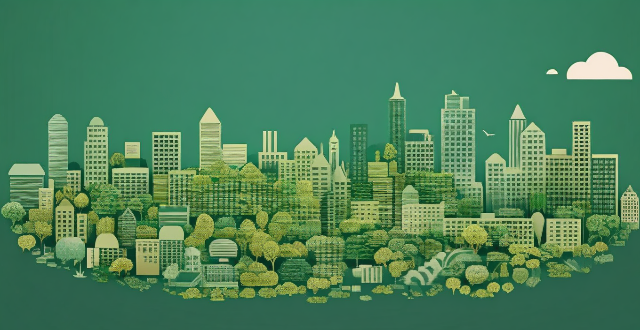The text discusses the role of technology in advancing ecological design, which is an approach to architecture and urban planning that emphasizes the integration of natural systems and processes into the built environment. The author outlines various ways in which technology contributes to ecological design, including data collection and analysis, simulation and modeling, sustainable materials and construction methods, energy efficiency and renewable energy sources, water management and conservation, connectivity and automation, and community engagement and education. Overall, technology plays a crucial role in advancing ecological design by providing tools, data, and methods for understanding and enhancing the relationship between human activity and the natural world.

The Role of Technology in Advancing Ecological Design
Ecological design is an approach to architecture and urban planning that emphasizes the integration of natural systems and processes into the built environment. Technology plays a crucial role in advancing ecological design by providing tools, data, and methods for understanding and enhancing the relationship between human activity and the natural world. In this article, we will explore how technology contributes to the development of ecological design principles and practices.
Data Collection and Analysis
One of the most significant contributions of technology to ecological design is the ability to collect and analyze vast amounts of data about the environment. This includes information on climate patterns, soil composition, water availability, and biodiversity. By leveraging technologies such as remote sensing, geographic information systems (GIS), and environmental sensors, designers can gain a deeper understanding of the site conditions and make informed decisions that minimize negative impacts on ecosystems.
Simulation and Modeling
Technology also enables designers to simulate and model various aspects of ecological design. For example, energy modeling software can help predict the performance of buildings in terms of heating, cooling, and lighting needs. Similarly, hydrological models can estimate runoff and drainage patterns, informing strategies for stormwater management. These simulations allow designers to test different scenarios and optimize solutions before implementation.
Sustainable Materials and Construction Methods
Technology has led to the development of new materials and construction methods that are more sustainable and have lower environmental impacts. Innovations like green roofs, solar panels, and energy-efficient windows are examples of how technology supports ecological design goals. Additionally, digital fabrication techniques such as 3D printing enable the use of locally sourced materials and reduce waste during the construction process.
Energy Efficiency and Renewable Energy Sources
The integration of renewable energy sources into building designs is another area where technology plays a vital role. Solar photovoltaic panels, wind turbines, and geothermal systems are just some examples of technologies that can significantly reduce a building's carbon footprint. Smart grids and energy storage solutions further enhance the efficiency of these systems, ensuring that renewable energy is used effectively.
Water Management and Conservation
Technology aids in managing water resources sustainably through advanced irrigation systems, rainwater harvesting techniques, and wastewater treatment technologies. These innovations help conserve water, reduce pollution, and maintain healthy ecosystems.
Connectivity and Automation
The Internet of Things (IoT) and automation technologies enable real-time monitoring and control of building systems. This allows for optimized energy usage, improved indoor air quality, and enhanced occupant comfort while reducing environmental impacts. For instance, smart thermostats can adjust temperatures based on occupancy patterns, saving energy without sacrificing comfort.
Community Engagement and Education
Finally, technology facilitates community engagement and education around ecological design principles. Online platforms, social media, and virtual reality tools can be used to involve stakeholders in the design process, share knowledge about sustainable practices, and raise awareness about environmental issues.
In conclusion, technology serves as a powerful tool in advancing ecological design by providing data-driven insights, enabling simulation and optimization, introducing sustainable materials and construction methods, integrating renewable energy sources, managing water resources efficiently, automating building operations, and fostering community involvement. As technology continues to evolve, its potential to support ecological design will only grow stronger.